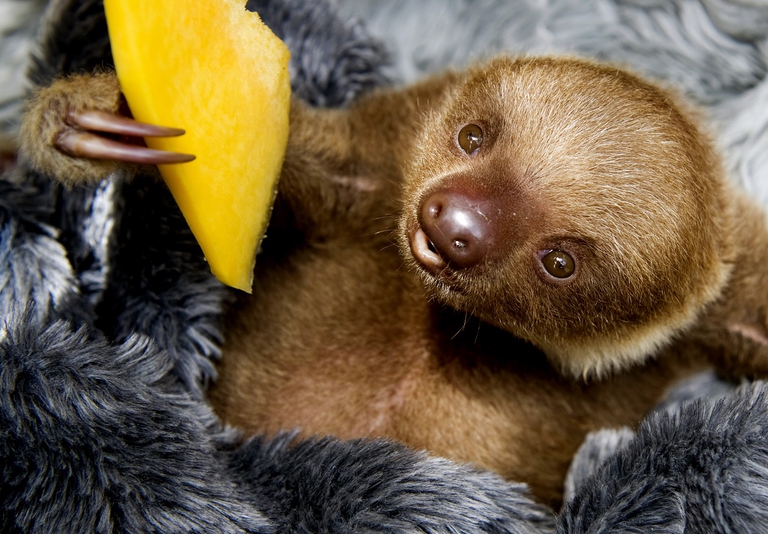
Our species took its first steps in a world covered in trees. Today, forests offer us sustenance, shelter, and clean the air that we breathe.
Lungi dall’essere un difetto, la snervante lentezza dei bradipi consente a questi animali di ottimizzare le energie e di nascondersi dai predatori.
Sloths are slow, unbelievably slow. They’re considered to be the apotheosis of laziness as there’s no other mammal on our planet that travels at such a slow pace. Naturalist Georges-Louis Leclerc de Buffon wrote: “Slowness and stupidity are the results of the strange and bungled conformation of sloths. Those imperfect sketches of Nature, which, being hardly endowed with the faculty of existence, could not subsist for any length of time, and have accordingly been struck out of the list of beings. One other defect added to the number would have totally prevented their existence.” However, judging a creature that has been roaming the Earth for 64 million years is anything but a good idea. In fact, sloth’s slowness has a precise role.
Sloths have a low metabolic rate and move at a sluggish pace, for a reason. Their purpose is the same of all living creatures: survival. Considering that sloths appeared on the planet millions of years ago, they’ve clearly adopted a winning strategy.
By observing the behaviour of pale-throated sloths (Bradypus tridactylus), researchers found out that – contrary to popular beliefs – these animals don’t spend most of their day snoozing. They only sleep 8-10 hours a day and spend the rest of the day moving at the same, slow pace. Their languid movements allow them to reduce their energy waste. Plus, these mammals are able to control their body temperature thanks to behavioural and postural adjustments.
Sloths’ diet is mainly based on leaves, which grant a low intake of energy. They thus balance such low calorie intake with reduced energy waste. As a result, sloths can’t move rapidly and run away if a predator attacks them. Their defensive strategy is based on mimicry, a technique they master also thanks to the presence of algae on their coat that creates shades of green, allowing them to become almost invisible in the thick, verdant forests of Central and South America. Sloth’s slowness is an added value for this technique, as main predators including jaguars, ocelots and harpies are used to spot prey for their movements. And sloths move at such a low pace that sometimes they can’t even be seen. Sloth’s lifestyle teaches us that we can’t judge a species just through our anthropocentric lens and that, in the end, being slow can be covenient.
Siamo anche su WhatsApp. Segui il canale ufficiale LifeGate per restare aggiornata, aggiornato sulle ultime notizie e sulle nostre attività.
![]()
Quest'opera è distribuita con Licenza Creative Commons Attribuzione - Non commerciale - Non opere derivate 4.0 Internazionale.
Our species took its first steps in a world covered in trees. Today, forests offer us sustenance, shelter, and clean the air that we breathe.
Poachers in Africa are encroaching on wildlife land and killing rhinos in travel hot spots now devoid of visitors due to the coronavirus pandemic.
Actor and environmental activist Leonardo DiCaprio has contributed two million dollars to a fund to protect Virunga National Park in Congo from threats such as terrorism, the coronavirus and poaching.
For the first time in seventeen years, Iceland’s two main whaling companies won’t resume whale hunting. The announcement concerns this year’s season but could carry into the future.
The relationship between the coronavirus and wildlife is complex: while the pandemic may lead to a reduction in the illegal trade in wild animals, it may also encourage it in other respects.
The largest coral reef in the world is severely threatened by climate change, but researchers are developing strategies that could contribute to saving the Great Barrier Reef.
NGO Free the Bears has opened a mountain sanctuary for moon bears in Laos. With the government’s help, it aims to close all bile farms by 2022.
Seychelles have extended its marine protected area, which now covers over 400,000 square kilometres, an area larger than Germany.
The tapir was reintroduced into Brazil’s Atlantic Forest, the country’s most at-risk ecosystem. The species can play a key role in the forest’s recovery.









